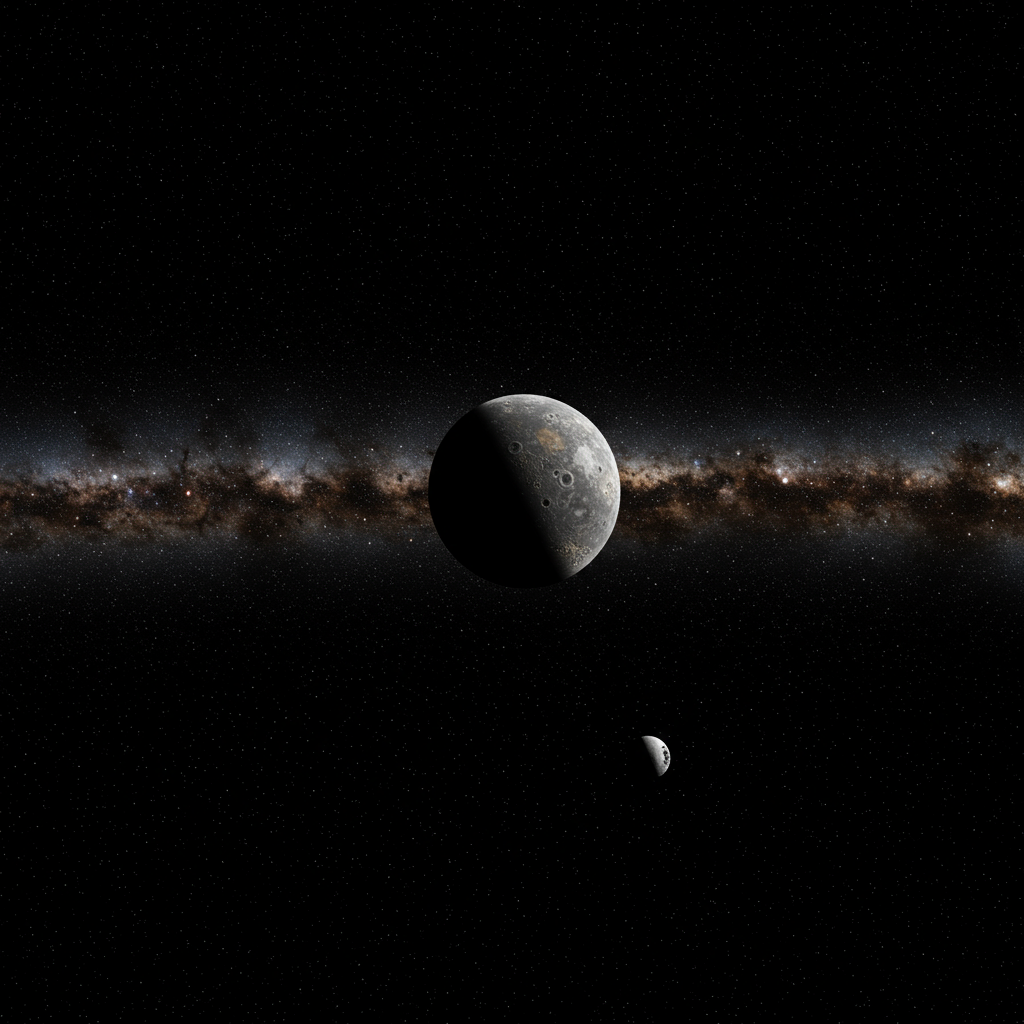The edge of our solar system has just welcomed a remarkable visitor. Astronomers have officially confirmed the discovery of a celestial object originating from outside our star system. Initially spotted as a faint point of light, this intriguing stranger has now earned the designation 3I/atlas, marking it as only the third confirmed interstellar object ever detected passing through our Sun’s domain. Its arrival offers scientists an unprecedented opportunity to study material from a distant star system up close.
A Visitor From Beyond Our Sun
This newly discovered interstellar object was first flagged in late June by the Asteroid Terrestrial-impact Last Alert System (ATLAS), a telescope survey designed to spot near-Earth objects. Initial observations were quickly followed up by astronomers worldwide. The International Astronomical Union’s Minor Planet Center, along with NASA and the Jet Propulsion Laboratory (JPL), swiftly added the object to their tracking lists. As more data poured in, particularly “tentative reports of cometary activity,” its true nature became clearer.
Its provisional name, A11pl3Z, was soon replaced with the official 3I/ATLAS. The “3” confirms it as the third interstellar object found, and the “I” unequivocally stands for “interstellar.” What makes astronomers so certain it came from outside our solar system? Its speed and trajectory provide the undeniable evidence.
Why We Know It’s Interstellar
Objects bound to our Sun’s gravity travel on elliptical orbits. They circle the Sun repeatedly. This new object, 3I/ATLAS, is different. It’s moving far too fast to be captured by the Sun’s gravitational pull. Its path is a hyperbolic trajectory, meaning it’s simply passing through the solar system on a one-way trip.
Experts like Paul Chodas, director of NASA JPL’s Center for Near Earth Object Studies, confirmed this. He noted that tracing its orbit backward suggests it came from “the center of the galaxy, more or less,” although its true origin is simply another solar system far away. The extreme speed is the giveaway. Astronomer David Rankin highlighted its “unprecedentedly” high orbital eccentricity, reported to be around 6.05 or even as high as 10, far exceeding the eccentricities of the previous two interstellar visitors. This exceptionally straight path confirms its origin beyond doubt. Various speed estimates place its velocity at 130,000 to over 200,000 miles per hour relative to the Sun. As Harvard professor Avi Loeb quipped, that’s a “thousand times over the speed limit on a highway.”
The Third in a Rare Lineup
Before 3I/ATLAS, only two other interstellar objects had ever been confirmed journeying through our solar system. The first, discovered in 2017, was famously named ‘Oumuamua. Hawaiian for “a messenger from afar arriving first,” ‘Oumuamua sparked intense scientific debate due to its unusually elongated shape – estimated to be up to 10 times longer than wide – and its slight acceleration away from the Sun without visible cometary activity. While initially thought to be an asteroid, its behavior hinted at cometary traits.
The second interstellar visitor, 2I/Borisov, was found in 2019 by amateur astronomer Gennady Borisov. Unlike ‘Oumuamua’s ambiguous nature, Borisov was clearly a comet, complete with a visible coma and tail. It even spectacularly broke apart as it neared the Sun.
The latest arrival, 3I/ATLAS, is provisionally classified as a comet. This makes it potentially the second known “rogue comet” to visit us from another star system. Scientists have long theorized that countless such objects are ejected from their home systems and drift through the vastness of interstellar space. Now, thanks to improving detection technology, we’re finally starting to find them.
The Mystery of Size and Composition
Determining the precise size of 3I/ATLAS is currently challenging. If it were a rocky asteroid, its observed brightness would suggest a substantial object, perhaps up to 12 miles (20 kilometers) wide, as estimated initially. However, classifying it as a comet changes everything.
Comets are often described as “dirty snowballs.” As they approach the Sun, the ice within them heats up and turns directly into gas, creating a glowing cloud of dust and gas called a coma around the solid nucleus. This coma can make the comet appear much larger and brighter than its relatively small solid core. Paul Chodas explained the difficulty: “You can’t infer the size of the solid object from the brightness of the coma.” Some estimates for the potential size if it’s a comet nucleus range up to 25 miles (40 kilometers), but this remains highly uncertain until more detailed observations can pierce through the coma. Josep Trigo-Rodriguez noted that an object spending millions of years in the cold of interstellar space might take longer to “wake up” and display cometary activity.
Tracking the Interstellar Visitor
3I/ATLAS is currently located between the orbits of the asteroid belt and Jupiter. NASA reported its distance from the Sun at about 416 million miles, roughly four and a half times the distance between Earth and the Sun. It’s rapidly approaching the inner solar system.
Astronomers are eager to study this object because, unlike ‘Oumuamua, which sped away relatively quickly, 3I/ATLAS is expected to be observable for an extended period. “It’ll be easily observable for astronomers around the world,” Chodas stated, anticipating it should remain visible to large telescopes well into next year.
Its trajectory will bring it relatively close to several points of interest in our solar system. Its closest approach to Mars’ orbit is anticipated around October 3rd. It will reach its closest point to the Sun (perihelion) shortly after, possibly around October 23rd or 30th, coming within approximately 130 million miles (about 2 AU), inside the orbit of Mars. Its closest pass to Earth is expected in December as it leaves the solar system, at a safe distance of around 176 million miles (284 million kilometers). There are also projections for a semi-close encounter with Jupiter in March of the following year.
Future Observations and Scientific Potential
The discovery of 3I/ATLAS is a major event for astronomy. It represents a tangible piece of another star system reaching us. Scientists are already planning intensive observation campaigns. Improved astronomical capabilities, such as advanced survey telescopes like the Vera C. Rubin Observatory (which may be operational soon), are better equipped to track such fast-moving objects than when ‘Oumuamua was first seen.
Proposals are also being discussed for using existing resources, potentially including NASA’s Mars rovers, to photograph the object during its close pass by the red planet. The powerful James Webb Space Telescope could also be tasked with observing 3I/ATLAS, perhaps even looking for subtle signs of “non-gravitational acceleration,” which could provide clues about its composition or even, as suggested controversially by Avi Loeb regarding ‘Oumuamua, hint at artificial origins (though the consensus remains that these are natural phenomena).
This rare visitor provides a unique window into the materials and conditions present in other stellar nurseries. Studying its composition, shape (once the coma subsides or is accounted for), and origin story can help scientists understand how planets and smaller bodies form and are dispersed throughout the galaxy.
Frequently Asked Questions
What is 3I/ATLAS and why is it considered special?
3I/ATLAS is the official designation for a celestial object recently discovered passing through our solar system. It is special because it is only the third confirmed object known to originate from interstellar space, meaning it came from another star system entirely. Its incredibly high speed and unique hyperbolic trajectory prove it is not bound by our Sun’s gravity and is simply making a brief visit before continuing its journey through the galaxy.
When and where can astronomers observe 3I/ATLAS?
3I/ATLAS is currently between the asteroid belt and Jupiter but is moving toward the inner solar system. It will reach its closest approach to the Sun around late October, passing inside Mars’ orbit. It is expected to remain observable with large telescopes well into next year, offering astronomers a long window for study, unlike the first interstellar visitor, ‘Oumuamua, which was visible for only a few weeks.
Is the interstellar object 3I/ATLAS a threat to Earth?
No, 3I/ATLAS poses no threat to Earth. Its trajectory has been calculated, and while it will enter the inner solar system and pass relatively close to the orbit of Mars and the Sun, its closest approach to Earth will be around 176 million miles away in December. Furthermore, Earth will be on the opposite side of the Sun when 3I/ATLAS is closest to our star, ensuring a safe passage. NASA’s Scout program has explicitly ruled out any possibility of Earth impact.
The arrival of 3I/ATLAS underscores the dynamic nature of our galaxy. Objects are constantly being exchanged between star systems, carrying clues about their distant origins. This third confirmed interstellar object provides astronomers with a fresh opportunity to gather precious data on these enigmatic cosmic travelers. Research will continue intensely in the coming months as scientists seek to unlock the secrets held within this rare visitor from another star.




